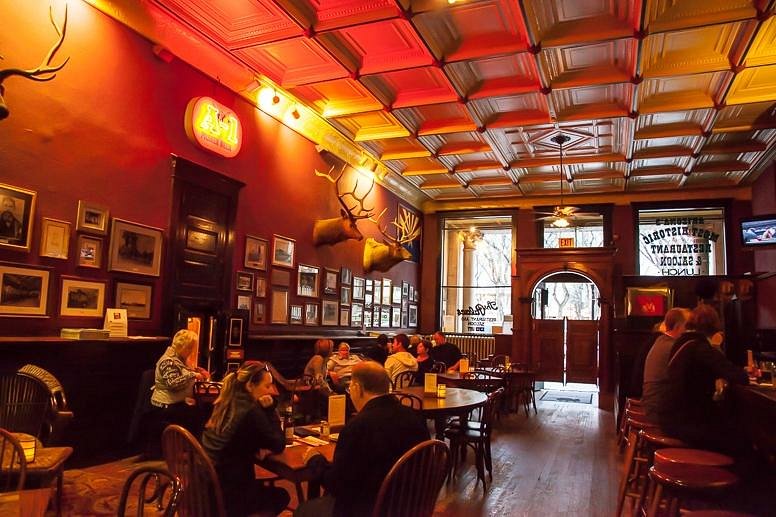
Hello, fellow food and lifestyle enthusiasts! As someone passionate about creating beautiful homes and delicious meals, I’m always fascinated by the history of fine dining. Recently, I stumbled upon a fascinating article from The New York Times archives, a 1975 review of a restaurant called The Palace.
Now, you might be thinking, “1975? What could be so interesting about a restaurant from almost 50 years ago?” Well, my friends, The Palace wasn’t just any restaurant. It was a sensation, infamous for being the most expensive restaurant in New York City, perhaps even the world, at the time.
Intrigued? I was too! So, put on your imaginary vintage gowns and tuxedos, and let’s take a trip back in time to experience The Palace through the eyes of renowned art critic and occasional restaurant reviewer, John Canaday.

A Spectacle of Extravagance (and Caviar)
Canaday’s review is as much a commentary on societal values as it is about the food itself. He paints a vivid picture of The Palace, a place where the price tag seemed to matter more than the actual dining experience. Imagine a $50 prix fixe menu in 1975! That’s equivalent to over $250 today! And that’s before even glancing at the wine list, which boasted bottles reaching a cool $300.
Canaday recounts a telling anecdote from the management, who, when questioned about the exorbitant prices compared to another high-end establishment, La Caravelle, quipped, “Yes, but that glass you’re drinking out of is a $15 glass. At La Caravelle you drink out of $3 glasses.” This perfectly encapsulates the ethos of The Palace – a place where extravagance reigned supreme, even if it meant sacrificing genuine culinary artistry.
One of the most amusing parts of the review is Canaday’s take on the restaurant’s attempt to mask the inclusion of caviar in the prix fixe menu. The menu grandly proclaimed “Oeufs de Sterlet sur Glace Lumineuse Romanoff,” which, as Canaday points out, is a fancy way of saying “Sturgeon Roe Romanoff on Illuminated Ice.” He humorously notes the use of the less common French word “Sterlet” for sturgeon, suggesting it was a deliberate attempt to obscure the offering’s true nature.

The Illusion of Elegance
While acknowledging the superficial elegance of The Palace – the tasteful (if somewhat generic) décor, attentive waiters in their black ties and neatly pressed shirts, and those pricey, beautifully polished glasses – Canaday argues that it lacked the soul of a truly fine dining establishment. The telltale sign? Canned music. Yes, you read that right. The Palace, with its aspiration for culinary greatness, subjected its patrons to the strains of Madama Butterfly’s “Un Bel Di” on repeat.
This detail, more than any other, highlights the dissonance between The Palace’s aspirations and its reality. It’s a stark reminder that true elegance lies not in ostentatious displays of wealth but in the meticulous attention to detail and the creation of an atmosphere that elevates the dining experience to an art form.

A Mixed Culinary Bag
So, what about the food? Canaday’s experience was a mixed bag. He opted for the regular menu, while recommending that those seeking a true taste of the kitchen’s potential should pre-order from the “Sur Commande” section, which required 48 hours’ notice.
Highlights included a delectable marinated salmon gravlax, an exquisite fish mousse served with contrasting red and green sauces, and a rich, creamy lobster bisque. However, there were misses too, like the overcooked angel hair pasta and lukewarm soft-shell crabs. The capon, while impressive in presentation and skillfully carved tableside, lacked that special something that elevates a dish from good to unforgettable.
The meal concluded with a seemingly endless procession of desserts – miniature pastries, cookies, and chocolates with ice cream centers – leaving Canaday feeling like he’d stumbled upon a “candy debauch.”

A Legacy of Extravagance Without Substance
The Palace ultimately failed to live up to its own hype. It serves as a cautionary tale of how a focus on exorbitant prices and superficial grandeur can overshadow the true essence of fine dining.
Today, we understand that a truly exceptional dining experience is a delicate balance of exquisite food, impeccable service, and an ambiance that engages all the senses. It’s about creating a symphony of flavors, textures, and aromas that linger in your memory long after the last bite.
For further reading on the history of fine dining and the evolution of culinary trends, I recommend checking out these resources:
- The Restaurant: From Concept to Operation: This book provides a comprehensive overview of the restaurant industry, from its history to the intricacies of running a successful establishment.
- The Eater’s Guide to Restaurant Lingo: Ever wondered what chefs and servers are really saying? This glossary decodes common restaurant jargon, giving you a glimpse behind the scenes.
- The Michelin Guide: Explore the world’s most celebrated restaurants and discover the history behind the prestigious Michelin star rating system.
And there you have it – a glimpse into the fascinating world of The Palace, a restaurant that ultimately taught us that true luxury lies not in the price tag but in the experience itself.
Happy dining, everyone!








